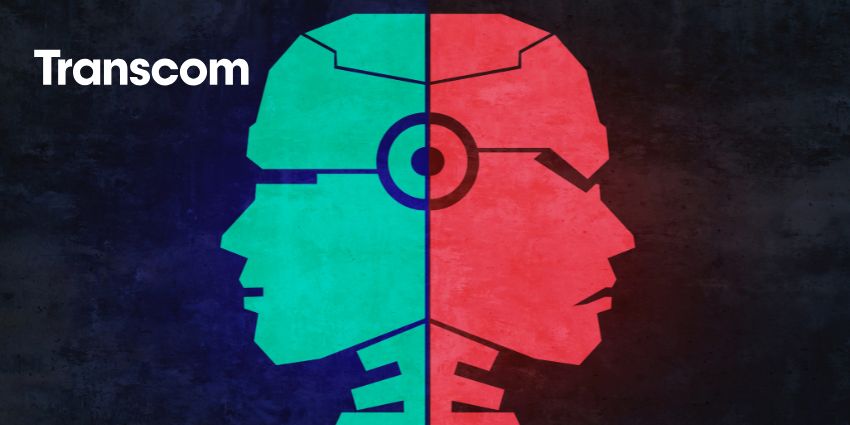In AI, 12 months is a lifetime. While laptops and smartphones may last a few years, today’s AI models go stale much sooner. That’s a big problem for brands building contact centers around them.
Unfortunately, many are doing so, slapping generative AI (GenAI) on top of their contact center stack, using basic API integrations and point solutions. But without more intelligent design, these plans will fail fast.
A better approach is building a smarter foundation. That includes a model architecture that’s channel-agnostic, a platform that automatically adapts to the nuances of each communication channel, and a system built for easy plug-and-play with emerging AI components.
With such as system, a contact center’s AI system will grow with them, not age out.
Carlos Aragon, Senior Director at Sprinklr, shared the following five insights to help contact centers build toward such as system and futureproof their AI investments.
- Build a Flexible, Modular Architecture
Aragon advocates for an approach where a contact center can design a single AI model, which advances over time, and deploy it across all their contact center channels. That eliminates the need to establish, monitor, and optimize separate models for each.
“The platform should also support language input from any source (voice or text) and include an intelligent integration layer that automatically adapts to channel-specific requirements,” he added.
Consider social customer service, for instance. Here, the model should limit responses to 300 characters on Instagram or extend to 3,000 words on Facebook, without manual intervention.
Equally crucial is support for plug-and-play AI components, such as virtual agents, recommendation engines, or other models, enabling seamless integration and flexibility.
- Continuously Monitor & Retrain AI Models
Continuous monitoring and retraining of AI allows for feedback loops that improve how the system responds to customers.
Second, it ensures the AI is functioning properly and not producing inaccurate information that could lead to business risks, whether that’s making false promises or even violating regulations, which could lead to lawsuits.
Over the past 18 months, there have been many examples of this. From virtual agents misadvising customers, arguing within them, and – per one memorable example – trashing the company.
Some of these cases have resulted in legal challenges. That’s why regularly retraining models to prevent data drift is essential. Otherwise, model performance can degrade over time.
“You should also use tools that allow agents to give feedback when an intent fails,” added Aragon.
“Even simple feedback like a thumbs up/down helps, but ideally, agents should be able to provide specific comments like: “This failed because the system didn’t include X.” That way, the system can learn and improve automatically.”
Moreover, many contact centers may move to update knowledge bases, case guides, and process scripts dynamically, so that the AI provides the right answer next time around.
- Prioritize Data Privacy & Ethical AI
Ethical AI and data privacy is not only essential from a legal perspective, but also from an AI hygiene standpoint. One major consideration here for brands that use third-party AI models is to ensure the proper scrubbing of personally identifiable information (PII).
Noting this, Aragon said: “At Sprinklr, for example, we use internal AI models that detect and scrub PII, like names, addresses, and bank information, before sending prompts to OpenAI or other LLMs.”
In doing so, Sprinklr replaces sensitive data with placeholders, sends the anonymized request, and when the response comes back, verifies it for hallucinations. If it passes a quality threshold, it re-injects the original data and deliver the final response to the customer.
“This approach is only possible if AI is built into the platform from the ground up,” continued Aragon. “For platforms treating AI as a plugin or afterthought, it’s extremely difficult to retrofit that level of control.”
Aragon then stressed that this approach ensures compliance with regulations like GDPR, CCPA, and any new laws that might emerge, because they will.
On this point, it’s critical to work with a vendor that can lay out its data privacy policy like this. After all, there have been several lawsuits raised against contact center providers in recent years.
Also, contact centers should avoid vendors that attempt lock-ins by only allowing integrations to their models. They should also be open to third-party models.
So, keep documentation portable, and apply the same governance standards across all systems.
- Align AI with Business & Customer Experience Goals
Many companies rush to implement contact center AI to reduce headcount. They think: “If I can deflect 60 percent of interactions, I save X dollars.” But often, they measure the wrong things.
For instance, a company might say: “We deflected three million interactions,” but if they don’t compare that against previous volumes, it’s meaningless.
After all, those three million deflections might actually increase traffic to the contact center because the bot didn’t resolve the issue, and the customer ended up calling anyway.
Aragon recommends a regular review of the impact AI is having on your customer journeys.
“Use AI to analyze conversations, identify trends, and determine whether the experience is actually improving or if customers are getting frustrated. You can’t fix what you can’t see,” he said.
Lastly, CX leaders need to be involved in AI planning. This isn’t just a contact center initiative to cut costs. It touches marketing, e-commerce, product, anywhere the customer journey lives.
- Upskill Teams & Foster a Culture of Innovation
AI literacy isn’t optional anymore. As Aragon says: “From agents to managers, should understand the basics: prompt engineering, data ethics, how AI impacts CX, and what risks to avoid.”
That crucial, as some contact centers have endured agents copying full chat transcripts and pasting them into ChatGPT to generate summaries, completely bypassing security protocols. That’s risky and shows a lack of training.
Companies must educate employees on why certain tools are restricted, and how to safely experiment with AI.
“We encourage experimentation – pilot programs, sandbox environments, etc. – but it must be done responsibly,” added Aragon.
“In our AI+ Studio, we train partners to build their own bots, prompts, and workflows visually, with drag-and-drop tools and minimal coding. We treat English as the “code” for prompts.”
Another good tip here is to celebrate wins across the organization. Help employees understand how AI benefits them—not just the company. The goal isn’t layoffs; it’s to elevate the human workforce.
Choosing the Right AI Partner Is Crucial
The average lifespan of an AI model is getting shorter. Replacing or retraining models takes time and money. Having pre-trained models within a flexible, modular architecture protects AI investments. Yet, as per the points above, there’s lots more to consider.
Perhaps the biggest point is: choosing the right CX vendor makes a real difference in total cost of ownership and in the long-term success of your AI strategy.
Sprinklr believes it’s the “right” CX vendor for many businesses based around the world. To learn more about its customer experience portfolio, visit: www.sprinklr.com




